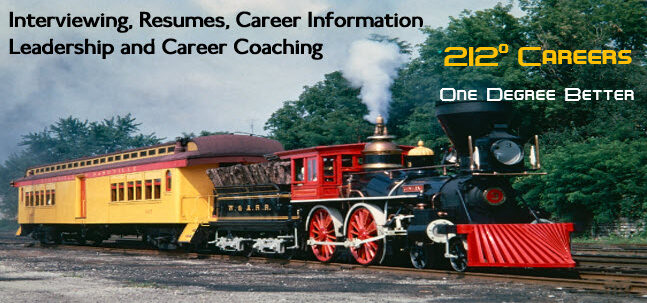Resumes “with an Attitude”
Resumes “with an Attitude”
Although the online application process of many organizations has changed the dynamic significantly, a resume is still a critical part of the job-hunting process. A resume may be the first thing a potential employer sees, it may be introduced as part of an interview. In other words, it still matters.
If you ignore, or are unaware of, the following dynamics, you don’t even get a “ticket” to the show.
- In the best of times, companies are typically going to be able to choose one out of a hundred applicants. In chaotic economic times, it may be more like one out of a thousand.
- The overwhelming majority of companies do some type of “screening” or “pre-sorting” of resumes – applications.
- Traditionally, 75% of the applicants are screened out because of errors (poor spelling/grammar), missing information, poor qualifications, etc.
- 15% are placed in a “B” pile – the candidate fits the basic qualifications, doesn’t have any of the problems in a) above and might be a good candidate IF…
- 10% are in an “A” pile – and 90% of hires are going to come from this pile.
- In today’s world (with the majority of applications going “online” in some form), the percentages may be more like 90% in the “C” pile. So, the job of making the “A” pile is tougher!!!!
- Resumes that read like “job descriptions” – simply describing typical job duties – are more likely to head for the “C” pile than the “A” pile — plus they’re BORING!!
Creating an “A” Pile Resume — 6 Simple Rules
- Make absolutely sure your resume doesn’t contain any spelling or grammatical errors. Get someone to review your resume for you!
- Eliminate worthless references to things like “Familiar with Microsoft Office.” So what? I’m familiar with a musical keyboard sitting in my den – but I can’t play it very well. As a hiring manager, I want to know what you can do – not what you have.
- Rule #3 may be the most important: Your entire resume should be about what you’ve done – not what you have. You have lots of experience – what’s important is what you’ve really accomplished.
- Every statement in your “work record” should start not just with a verb – but with an “action verb.” Words like “provides, performs, responsible for, managed, assisted” don’t really say anything. Your resume should be on what you’ve “accomplished.”
- In many ways, your resume is a “first impression.” It creates an immediate response (in seconds) so, to make the “A” pile:
- Shorter is better than longer (Create different versions: 1 Page – 2 Page Follow-Up…)
- Margins – Spacing – Font Size – they’re all important. The quickest way to the “C” pile is with a resume that has ½” margins, six different fonts- most 8 pt.
- Most “Objective Statements” belong in letters (unless you customize each one in a resume) – they’re too general, too vague, or worthless.
- In addition to accomplishments (with powerful “action” verbs), your resume should reflect your “strengths” – the things you’ve done in each job that made you feel “strong.”
Check out our study of resume formats. There’s a collection of four sample resumes, transforming a “B” resume into a strengths-based resume featuring accomplishments. The resume was overwhelmingly preferred by HR Professionals.
